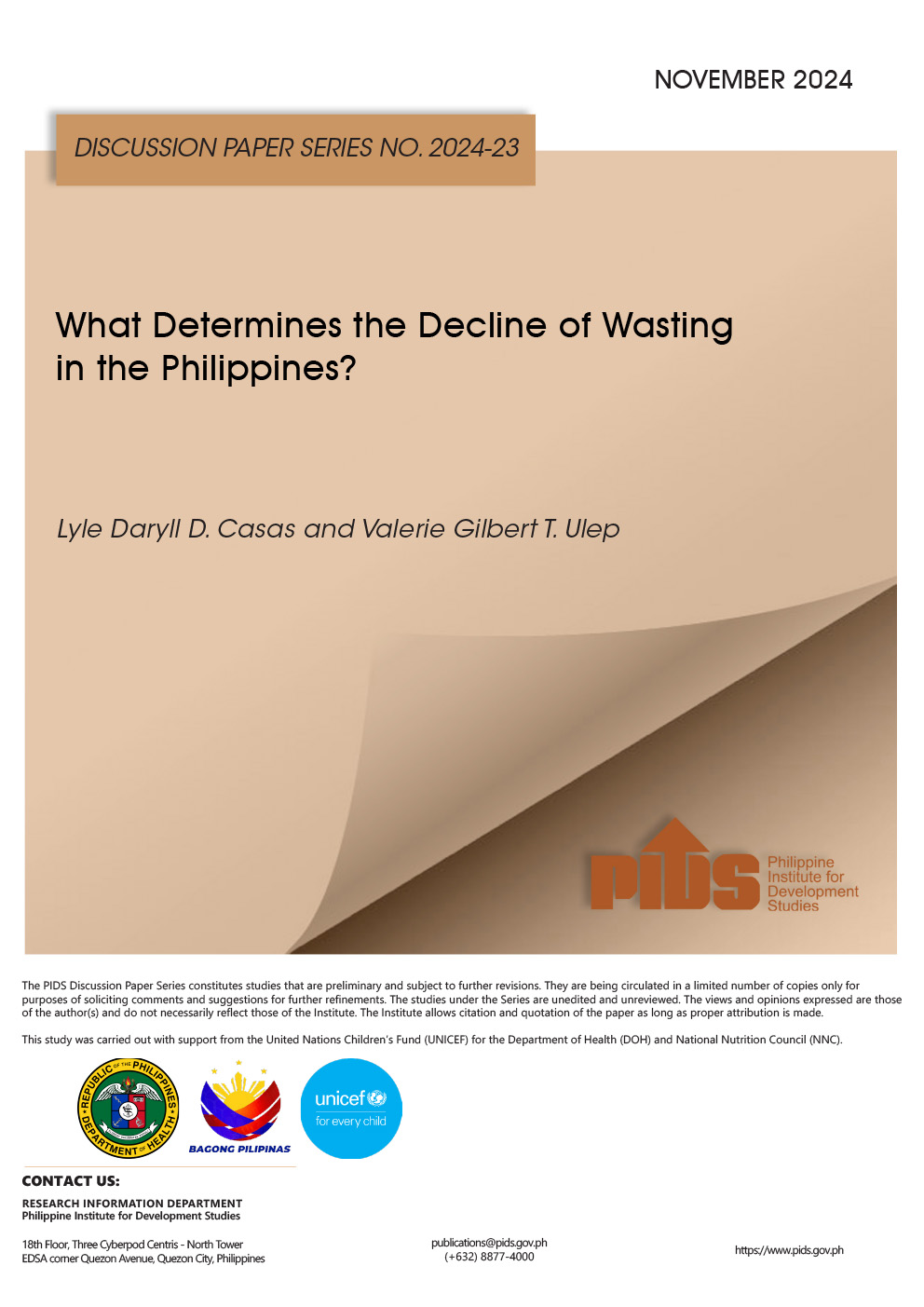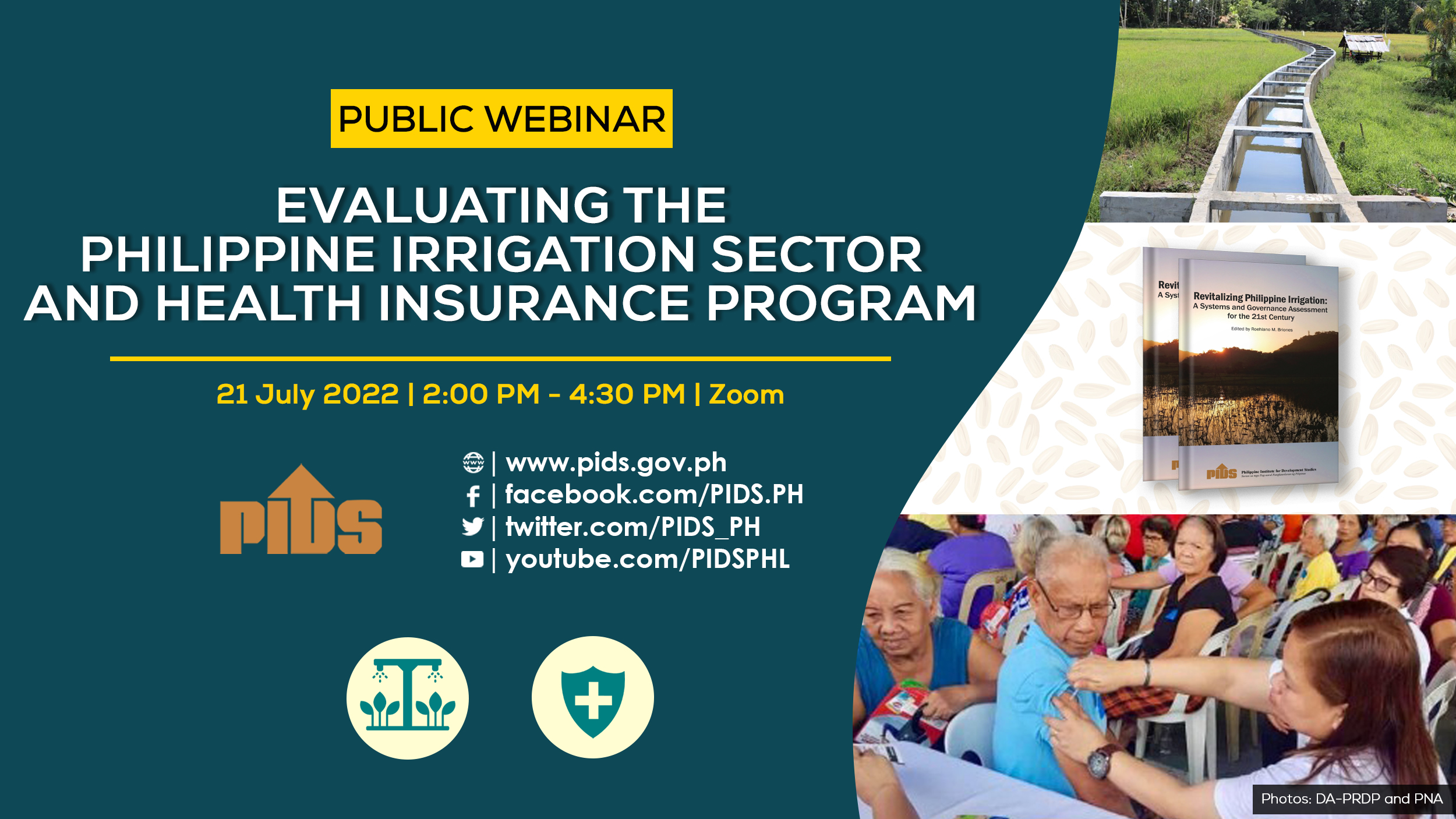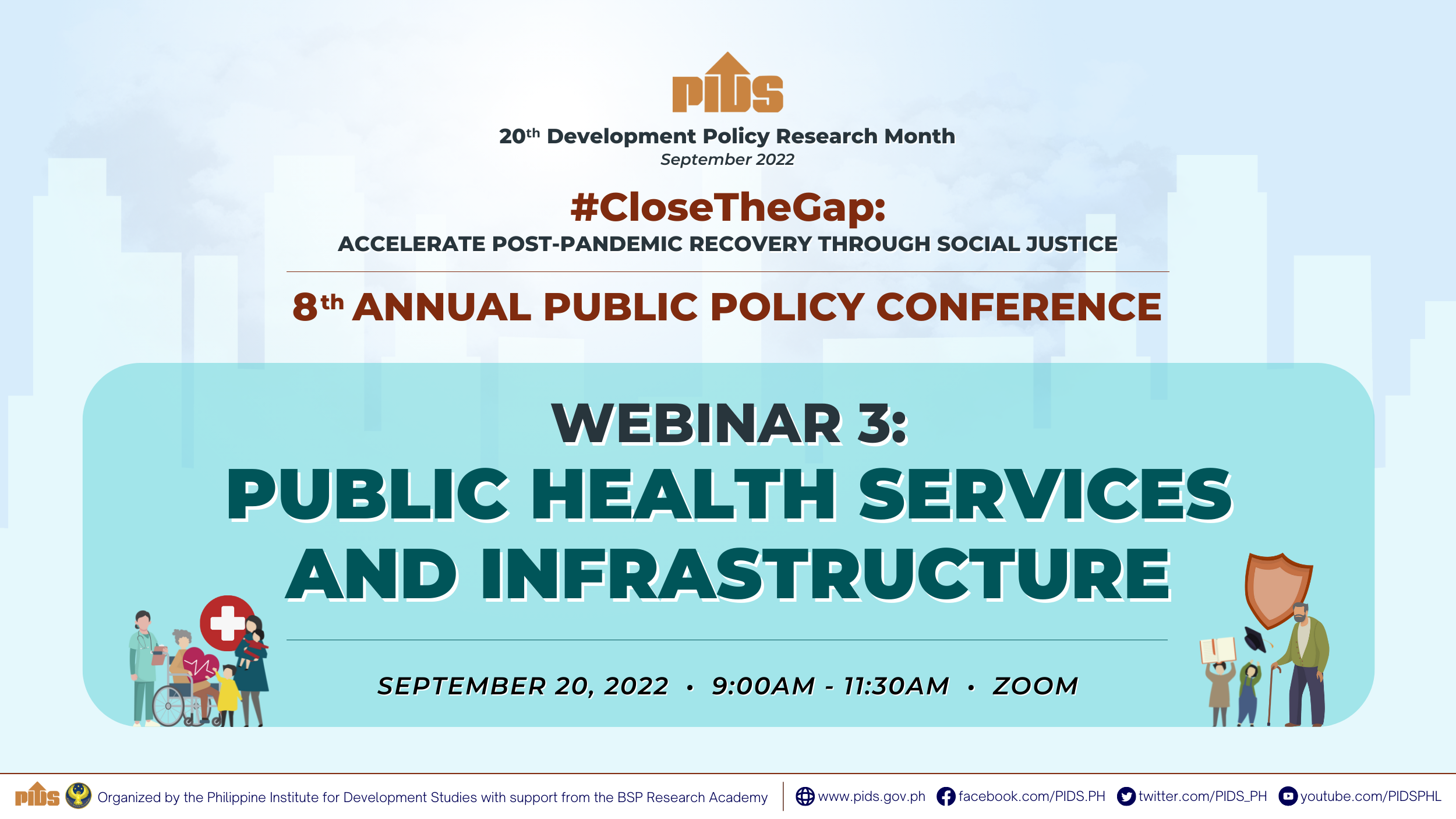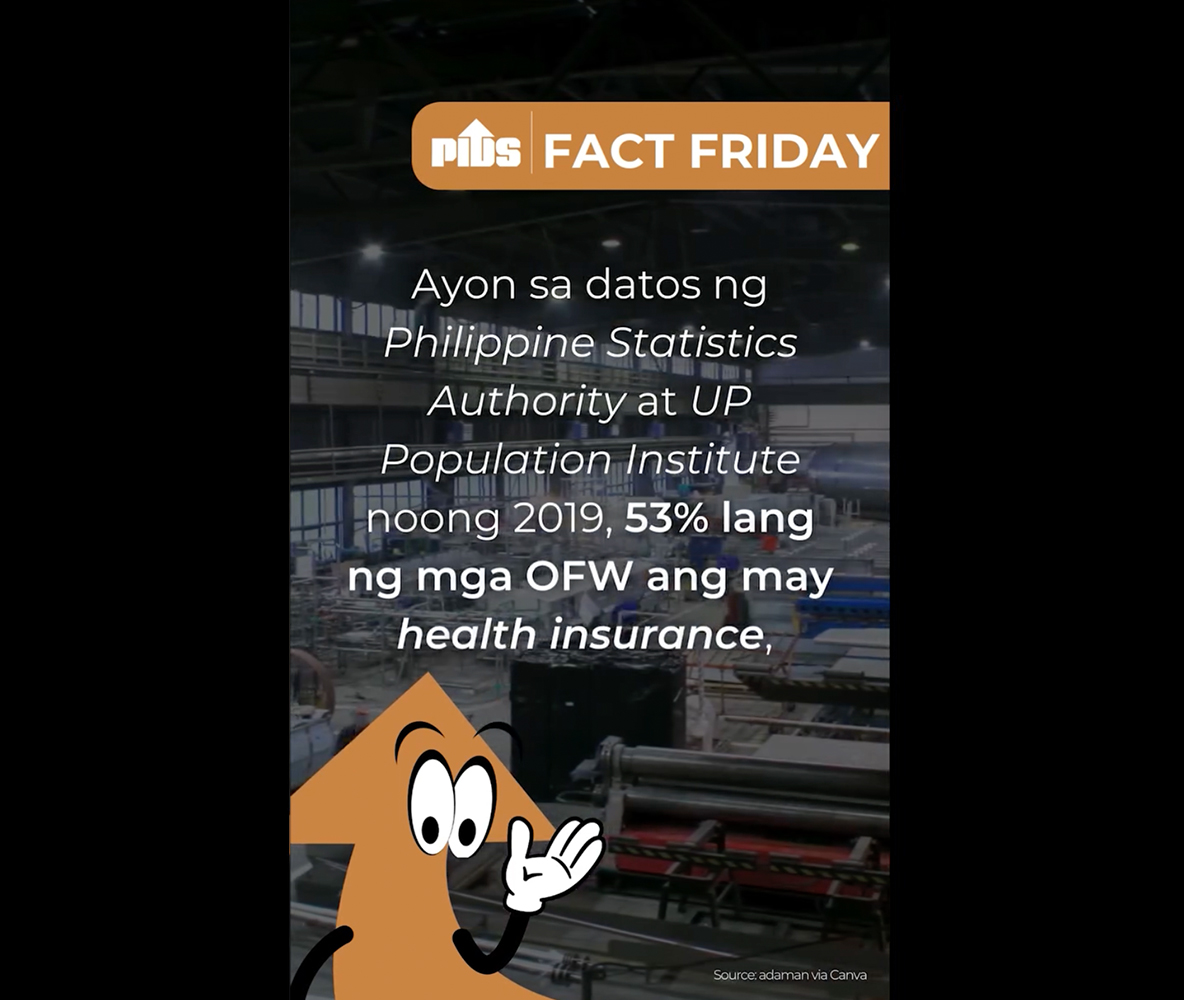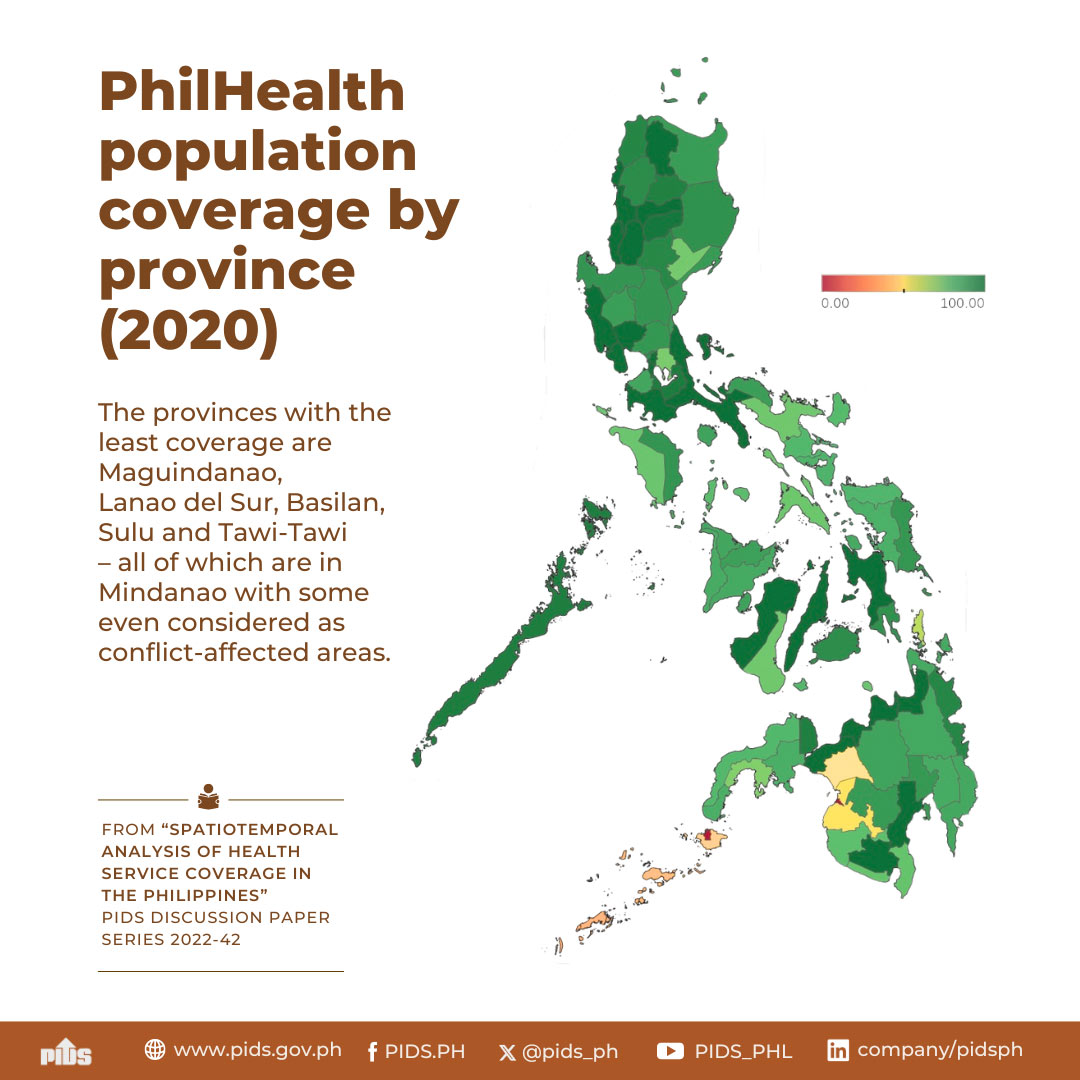
The decline in the country’s immunization coverage is largely due to recurring issues in the supply side of the government’s immunization program.
Jhanna Uy emphasized this at a recent webinar organized by state think tank Philippine Institute for Development Studies (PIDS) titled “Examining the Country's Expanded Immunization Program and Primary Health Care for Noncommunicable Diseases”.
Uy, a supervising research specialist and coauthor of the study “An Assessment of the Expanded Program on Immunization (EPI) in the Philippines: Challenges and Ways Forward”, explained that while demand factors like vaccine confidence have contributed to the decrease in the immunization coverage, these “do not entirely explain the fluctuations” in the past decade.
She said supply factors contributed to the problem.
According to Uy, the vaccine stockouts in the country can be partly attributed to the failure in local bidding. “In 2013 to 2015, there was a persistent stockout in pentavalent because of failed local bidding. We have difficulty maintaining stocks of pentavalent vaccine and those for polio, measles, and hepatitis B,” she explained.
The Department of Health (DOH) has been procuring vaccines from local manufacturers as part of the government’s long-term effort to achieve vaccine independence. This, however, has contributed to national stockouts, according to Uy, due to procurement issues.
She noted that it takes one year to complete the procurement process for vaccines and other supplies. “More than half of all awarded bids for the EPI vaccines take more than 106 days and the bottlenecks are on the notice of award, post qualifications, and contract signing,” she said.
Another issue is the DOH’s lack of storage for vaccine stocks. “In terms of national storage and distribution, the DOH has limited capacity to accommodate vaccine supplies. The [Research Institute for Tropical Medicine] can only accommodate around [a] three-month supply of all these basic vaccines. Ideally, you would have a [buffer stock for 3-6 months] but this is not possible with the limited space,” Uy said.
She also raised the lack of an organized system in the distribution of vaccines in local government units, lack of investment in service delivery channels, lack of an electronic monitoring system for the proper inventory of vaccines and supplies in local health facilities, and the limited collaboration between the government and private sector in terms of EPI.
Meanwhile, Kim Patrick Tejano, the national immunization program manager of the DOH’s Disease Prevention and Control Bureau, said the National Immunization Program (NIP) is taking steps to address these issues.
Tejano, a discussant in the webinar, shared NIP’s plan to assess the management of vaccines around the last quarter of 2021 to “check whether the issues and challenges before were already addressed and to find ways to [resolve] the new and recurring problems on the supply-side of vaccination”.
Moreover, he mentioned that the DOH has already developed a ‘multiyear contracting agreement’ for the immunization program in coordination with development partners and the Department of Budget and Management.
The agency has requested technical assistance from the “UNICEF to provide guidance and recommendations on redesigning the procurement practices and improving strategies for vaccine logistics supply chain, cold chain, and delivery”.
“[Further], we [continuously engage] with medical societies, nongovernment organizations, the private sector, other national government agencies, local government units, and other stakeholders [using a] whole-of-society, whole-of-government, whole-of-system approach [to ensure that] eligible populations are vaccinated,” Tejano concluded. ###
You may watch the webinar at https://www.facebook.com/PIDS.PH/videos/460568465216019. For more videos of PIDS events, go to https://www.pids.gov.ph/videos.
Jhanna Uy emphasized this at a recent webinar organized by state think tank Philippine Institute for Development Studies (PIDS) titled “Examining the Country's Expanded Immunization Program and Primary Health Care for Noncommunicable Diseases”.
Uy, a supervising research specialist and coauthor of the study “An Assessment of the Expanded Program on Immunization (EPI) in the Philippines: Challenges and Ways Forward”, explained that while demand factors like vaccine confidence have contributed to the decrease in the immunization coverage, these “do not entirely explain the fluctuations” in the past decade.
She said supply factors contributed to the problem.
According to Uy, the vaccine stockouts in the country can be partly attributed to the failure in local bidding. “In 2013 to 2015, there was a persistent stockout in pentavalent because of failed local bidding. We have difficulty maintaining stocks of pentavalent vaccine and those for polio, measles, and hepatitis B,” she explained.
The Department of Health (DOH) has been procuring vaccines from local manufacturers as part of the government’s long-term effort to achieve vaccine independence. This, however, has contributed to national stockouts, according to Uy, due to procurement issues.
She noted that it takes one year to complete the procurement process for vaccines and other supplies. “More than half of all awarded bids for the EPI vaccines take more than 106 days and the bottlenecks are on the notice of award, post qualifications, and contract signing,” she said.
Another issue is the DOH’s lack of storage for vaccine stocks. “In terms of national storage and distribution, the DOH has limited capacity to accommodate vaccine supplies. The [Research Institute for Tropical Medicine] can only accommodate around [a] three-month supply of all these basic vaccines. Ideally, you would have a [buffer stock for 3-6 months] but this is not possible with the limited space,” Uy said.
She also raised the lack of an organized system in the distribution of vaccines in local government units, lack of investment in service delivery channels, lack of an electronic monitoring system for the proper inventory of vaccines and supplies in local health facilities, and the limited collaboration between the government and private sector in terms of EPI.
Meanwhile, Kim Patrick Tejano, the national immunization program manager of the DOH’s Disease Prevention and Control Bureau, said the National Immunization Program (NIP) is taking steps to address these issues.
Tejano, a discussant in the webinar, shared NIP’s plan to assess the management of vaccines around the last quarter of 2021 to “check whether the issues and challenges before were already addressed and to find ways to [resolve] the new and recurring problems on the supply-side of vaccination”.
Moreover, he mentioned that the DOH has already developed a ‘multiyear contracting agreement’ for the immunization program in coordination with development partners and the Department of Budget and Management.
The agency has requested technical assistance from the “UNICEF to provide guidance and recommendations on redesigning the procurement practices and improving strategies for vaccine logistics supply chain, cold chain, and delivery”.
“[Further], we [continuously engage] with medical societies, nongovernment organizations, the private sector, other national government agencies, local government units, and other stakeholders [using a] whole-of-society, whole-of-government, whole-of-system approach [to ensure that] eligible populations are vaccinated,” Tejano concluded. ###
You may watch the webinar at https://www.facebook.com/PIDS.PH/videos/460568465216019. For more videos of PIDS events, go to https://www.pids.gov.ph/videos.

